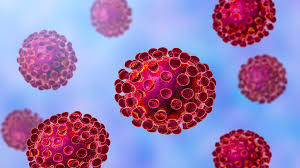Convalescent plasma therapy is an experimental treatment that some doctors are using for people with severe coronavirus disease 2019 (COVID-19). No drug has yet been proved to be safe and effective for treating COVID-19. And the U.S. Food and Drug Administration (FDA) hasn’t approved any drugs specifically to treat people with COVID-19.
But people who’ve recovered from COVID-19 have antibodies — proteins the body uses to fight off infections — to the disease in their blood. The blood from people who’ve recovered is called convalescent plasma. Plasma is the liquid portion of the blood. Researchers hope that convalescent plasma can be given to people with severe COVID-19 to boost their ability to fight the virus. It also might help keep people who are moderately ill from becoming more ill and experiencing COVID-19 complications.
More than 6,000 COVID patients have now received convalescent plasma. It’s not clear yet how much it may help. But it’s a technique that goes way back. The procedure has been around for 120 years. It was even the winner of the first Nobel Prize in Medicine in 1901.
Vivek Cherian, an internal medicine specialist, says, “The basic idea is to transfer immunity to patients who are ill with COVID-19 from patients who have recovered from COVID-19.It has been used in the past to fight off other viral outbreaks including MERS and SARS epidemics as well as the H1N1 pandemic. A recent report drawn from more than 5,000 doctors as well as more than 2,000 hospitals and labs suggests that the treatment is safe, however the hard data regarding the effectiveness of the treatment is still pending.”
Convalescent plasma therapy may be helpful for people with COVID-19 who aren’t helped by other treatments. Some people with COVID-19 become very sick and don’t respond to other treatments or drugs. These people often develop acute respiratory distress syndrome (ARDS) — a severe lung condition. They often require mechanical assistance, such as a ventilator, to breathe. These people also are in danger of developing organ failure.
It could also help other people who may have a higher risk of serious illness, such as people with chronic medical conditions, for example, heart disease or diabetes, or those who have weakened immune systems. Convalescent plasma could help these people from getting sicker if they get COVID-19. Convalescent plasma might also be considered for family members or health care workers who have been exposed to someone with COVID-19 to potentially prevent them from getting COVID-19.
Doctors may choose to enroll the person with COVID-19 in an expanded access program and order convalescent plasma for him or her. This type of program provides access to investigational new drugs outside of clinical trials. This type of program is sometimes necessary when a disease is very severe or life-threatening, and there is no available treatment.
A person may be considered a candidate for convalescent plasma therapy if they’re seriously ill with COVID-19 in the hospital. Your doctor will decide if it will be beneficial for them and may enroll them in the treatment program. The doctor will order convalescent plasma that is compatible with the patient’s blood type from a hospital’s local blood supplier.
Before the procedure
Before convalescent plasma therapy, the health care team prepares a patient for the procedure. A health care team member inserts a sterile single-use needle connected to a tube (intravenous, or IV, line) into a vein in one of their arms.
During the procedure
When the plasma arrives, the sterile plasma bag is attached to the tube and the plasma drips out of the bag and into the tube. It takes about one to two hours to complete the procedure.
After the procedure
Because this investigational therapy hasn’t yet been tested, the patient will be closely monitored after the convalescent plasma procedure. The doctor will record the response and reaction to the treatment. He or she may record how long the patient needed to stay in the hospital or if they needed help with breathing or other therapies following the convalescent plasma procedure.
It’s not yet known if convalescent plasma therapy will be an effective treatment for COVID-19. However, this treatment might improve patients’ ability to recover from the disease. The collective results from people receiving convalescent plasma therapy can provide information about the effectiveness of the therapy and whether it can become an approved therapy to treat COVID-19. In preliminary treatment, many people have benefited from convalescent plasma therapy. Researchers continue to evaluate the results from people who received the therapy. By studying results of this therapy for COVID-19, doctors are getting closer to finding a treatment. In addition, learning more about the use of convalescent plasma therapy now will help health care workers be better prepared to provide optimal patient care.



